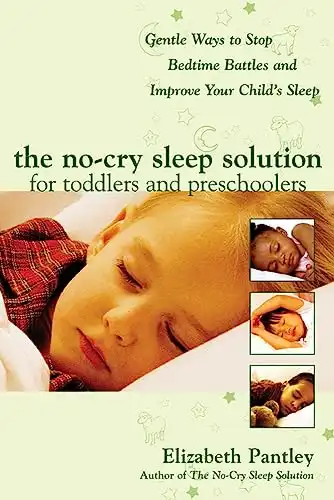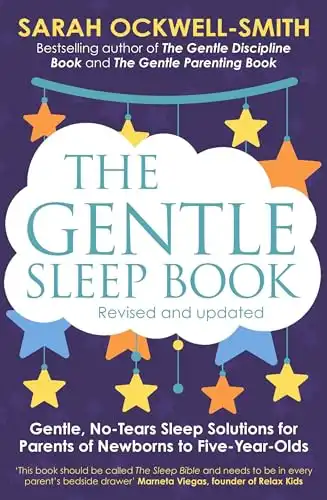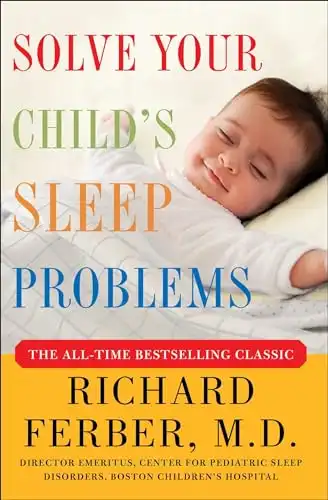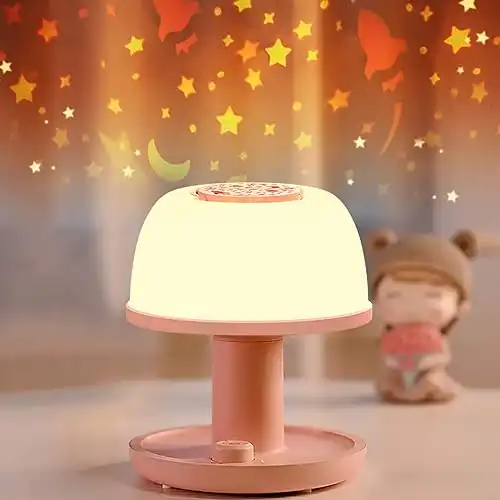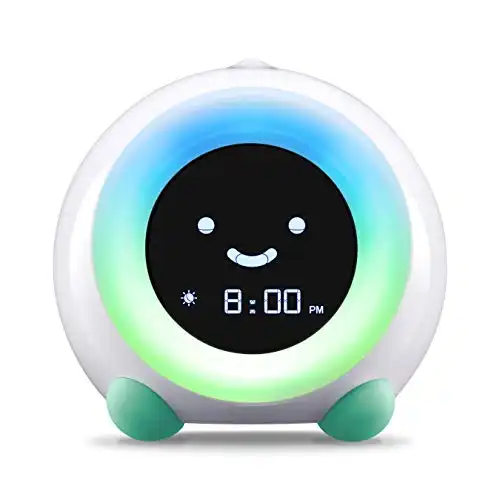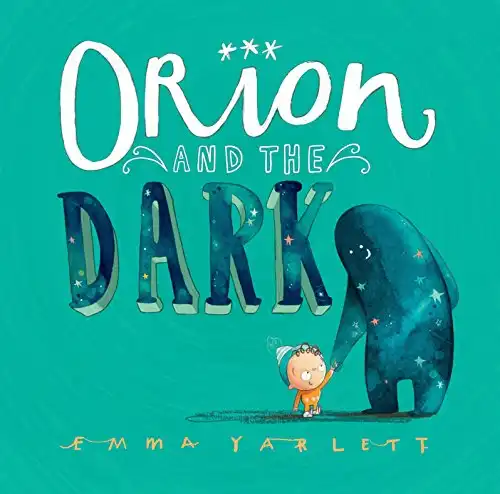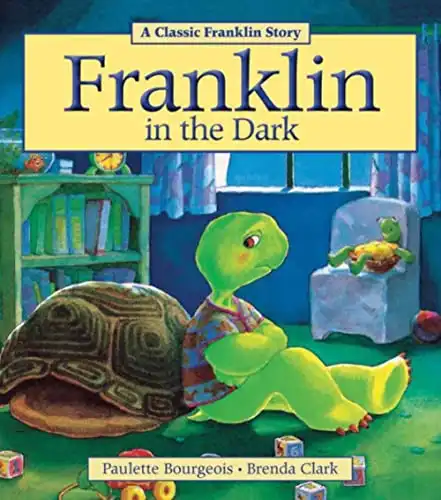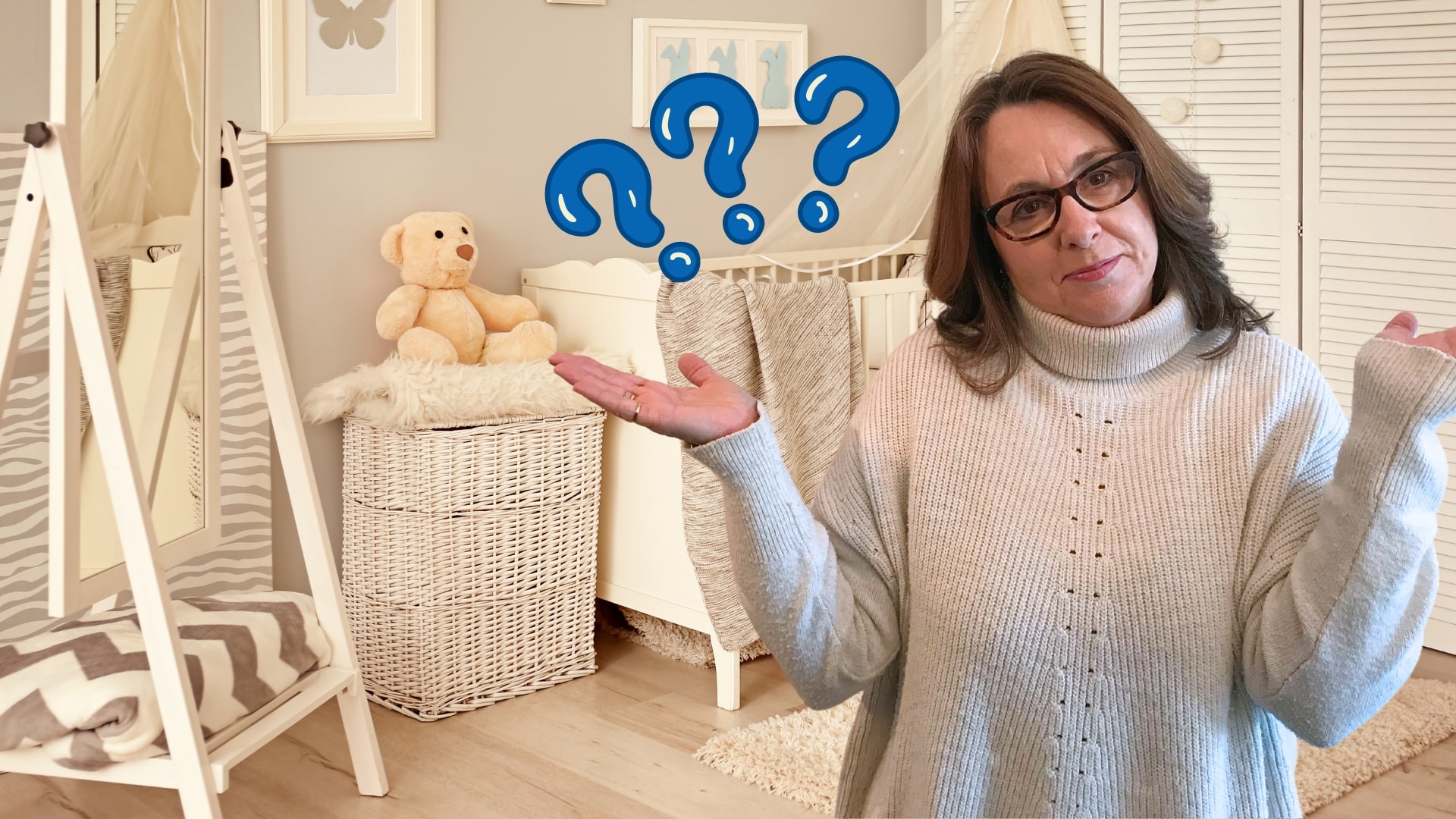Is bedtime a battleground in your home? Does your 2-year-old fight going to sleep and refuse to sleep without you? Do you find yourself tiptoeing around after finally getting them down, praying they sleep through the night?
As a parent, lack of sleep can leave you drained. But it doesn’t have to be this way.
Inside this guide on sleep training a 2-year-old, you’ll discover proven techniques to transform bedtime from stressful to serene.
With step-by-step methods to encourage healthy sleep habits and teach your toddler to soothe themselves to sleep, you’ll all get the full night’s sleep you deserve in no time!
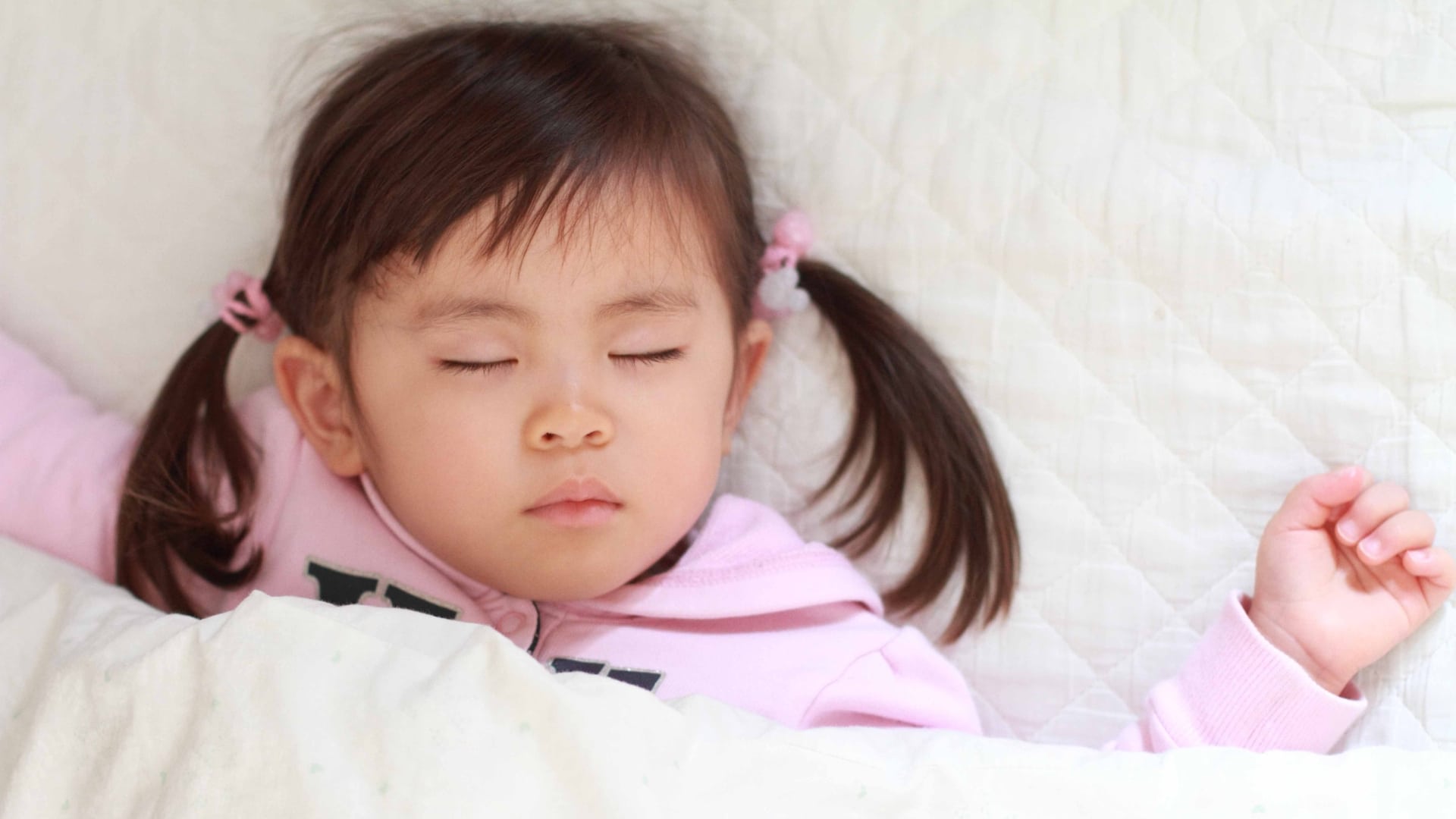
Table of Contents
Key Takeaways
- Establishing healthy sleep habits lays the foundation before formal sleep training methods. This includes a consistent bedtime routine, a proper sleep environment, and ensuring age-appropriate daytime sleep.
- Gentle sleep training techniques like the Chair Method and the “I’ll Be Back” Method are highly effective for sleep training a 2-year-old without leaving them to cry.
- Being consistent with the sleep training method and prepared for common sleep training challenges like sleep regressions, night terrors, and transitioning from co-sleeping to independent sleep will ensure you have the highest chance of sleep success.
Understanding Toddler Sleep Training
Sleep training a toddler can be a challenging experience for both you and your little one.
So it’s important to understand WHY you want to start sleep training.
Pediatricians recommend that toddlers get between 11-14 hours of sleep in 24 hours split between nighttime sleep and daytime naps.
As this is a nap transition age, some 2-year-olds will need two naps a day, but many will only need one.
Sadly, these changing sleep needs mean it’s very easy for a child’s sleep cycle to fall out of sync… with many toddlers struggling to fall asleep and stay asleep through the night around 2 years old.
And this is where sleep training comes in.
Sleep training is teaching your child to self-soothe and fall asleep on their own without relying on external factors such as being held or rocked.
There are several sleep training methods that parents can use, including the Ferber method, the I’ll Be Back method, and the fading method… all of which I will explain in further detail later in the post.
Now it’s important that I say this…
Sleep training a 2-year-old takes time and patience. It is not a quick fix, and it may take several weeks or even months for your toddler to develop healthy sleep habits.
However, with consistency and patience, you will be helping your child develop healthy sleep habits that will benefit them for years to come.
How To Sleep Train A 2-Year-Old: Preparation
The first step on your sleep training journey is to ensure you have healthy sleep habits in place.
These tips should always be implemented BEFORE you start sleep training a 2-year-old, because you may find once they’re in place, you may not need to sleep train your toddler.
You will also find that if you do decide to sleep train after implementing these healthy sleep habits, your chances of success will be far higher.
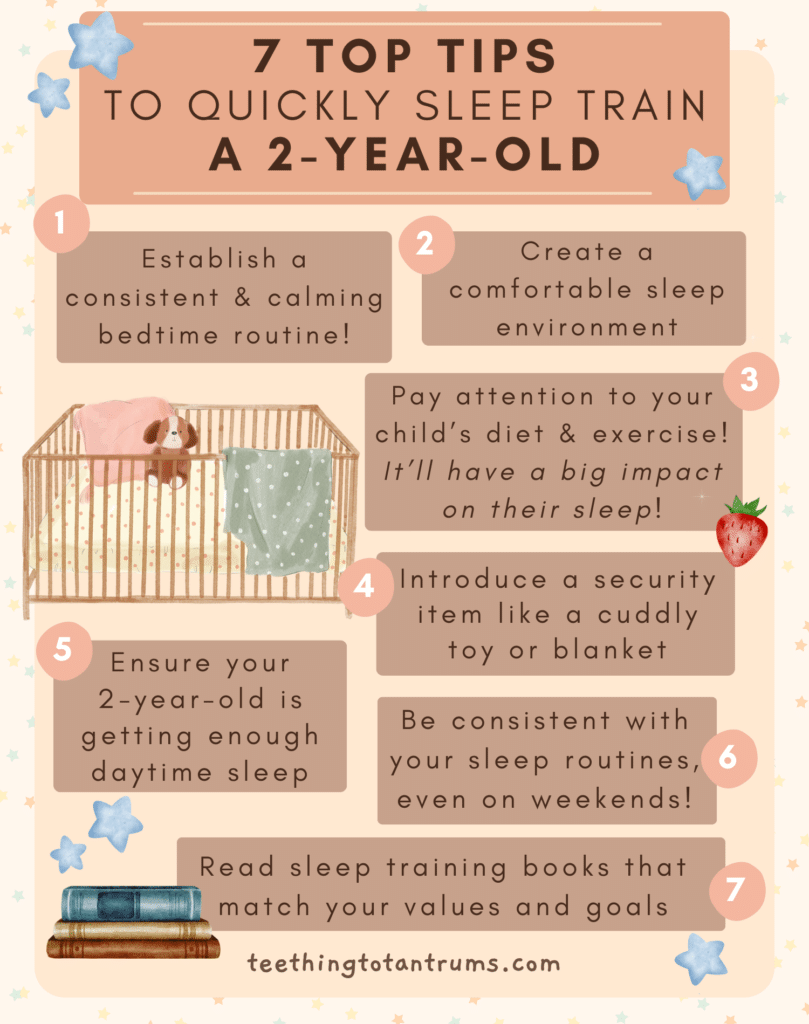
- Establish a bedtime routine. First and foremost (and this is something I am always emphasizing) creating a consistent bedtime routine is essential for your toddler. Start with calming activities an hour before bed that are screen-free. Follow this with a bath, a milky drink, and reading a book together. Offer acceptable choices so that your toddler feels they have some control over the routine too, such as choosing the bathtime toys, what PJs to wear, or which 2 books to read.
- Ensure the environment in your toddler’s room promotes sleep. Consider using a nightlight or white noise machine to provide comfort and to help the room feel cozy. Soft sheets and comfortable sleepwear will also help your 2-year-old feel relaxed and snuggly. The ideal room temperature for toddlers to sleep in is 18°C to 22°C (65°F to 70°F).
- Pay attention to diet and exercise. A balanced diet and regular exercise outside can help regulate your child’s circadian rhythm and melatonin production, making it easier for them to fall asleep at night. Avoid sugary or caffeinated foods and drinks in the evening and make sure they have plenty to eat during the day so that hunger is not the cause of nighttime waking. Toddlers aged between 4 months – 3 years old need around 82 kcal/kg/day.
- Introduce a security object. Toddler separation anxiety at night can be very overwhelming and having a favorite toy or blanket to provide comfort when your little one is learning to self-soothe can make all the difference.
- Ensure they are getting enough age-appropriate daytime sleep. As this is the age for a 2-1 nap transition, you may find on busy days that your 2-year-old needs an extra nap to help them get to bedtime without getting overtired. Keep an eye out for sleep cues and act on them quickly. But remember, your toddler should be awake for 5.5-6 hours before bedtime.
- Be consistent. Consistency is key when it comes to sleep training a 2-year-old and teaching them healthy sleep habits. Stick to the same routine at the same time every night and avoid making exceptions, even on weekends. It is also very important to keep bedtimes and naps on schedule and at the same times daily.
- Read some sleep training books. There are many sleep training methods to choose from and you must choose one that you feel comfortable with. A lot will depend on what sort of issues you are having and there is a lot you can do before embarking on conventional sleep training methods that may help your little one to successfully fall asleep alone and resettle themselves at night.
Looking to get your little one to sleep quickly and effortlessly? Check out my Bedtime and Nap Cheat Sheet and master the art of making daytime naps and bedtimes as seamless as possible.
A bedtime & nap cheat sheet so good your little one will ask you to put them to bed...
Laura Williams "This is a life saver! I'm so glad I downloaded your bedtime & nap cheat sheet. My little one actually asked me to put him to bed last night! Unbelievable! Thank you so much!"
Click Here For The FREE Cheat Sheet
Suitable Sleep Training Methods For A 2-Year-Old
When it comes to sleep training your 2-year-old, there are several effective techniques you can try… However, as I have already said, it is about finding the right fit for your family.
You should never embark upon a sleep training method that does not feel right for you or your toddler or continue using one if it’s causing unnecessary stress and anxiety.
So, with that in mind, after many years of being a Norland Nanny specializing in sleep issues and researching sleep training techniques, here are the top ways you can sleep train a 2-year-old toddler:
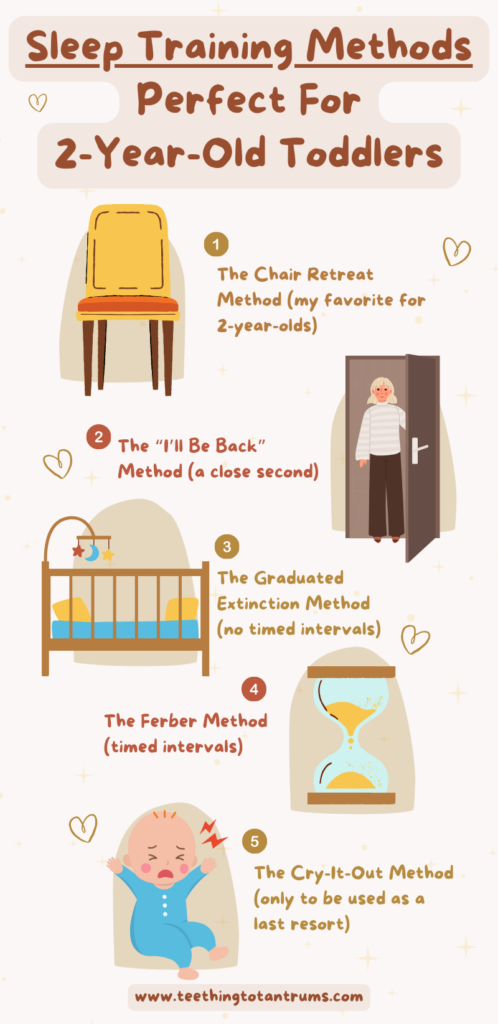
1. The Chair Method (My Favorite)
The Chair Method, also known as the Gradual Retreat Method or the Camping Out, involves gradually reducing the amount of physical contact you have with your child while they fall asleep.
It is one of my preferred methods for sleep training a 2-year-old who needs extra reassurance that you’re nearby and I have had great success with it.
To implement this gradual and comforting method stay in the room with your little one after you have said goodnight, and sit next to their bed until they fall asleep.
Night after night, move the chair further away from the crib.
You should avoid talking to your toddler once the lights are out… But if they need comforting, (and you’re within reach) offer a tummy rub or kiss on the forehead, accompanied by a firm but kind “good night”.
2. The ‘I’ll Be Back’ Method (A Close Second)
Another one of my top sleep training methods for 2-year-olds is the ‘I’ll be back’ method.
To use this technique, start by settling your little one in their bed, saying “good night” and telling them that you need to attend to a chore.
Make sure the chore is very boring (laundry, emails, and cleaning are all good options), and reassure your toddler that you’ll return in a few moments.
Ensure that you do return as promised and repeat this process, gradually extend the time you are away doing whatever you have told them that you need to do.
(PS: you don’t have to go and do emails… it’s simply to stop your toddler from wanting to join in)
The crucial aspect of this sleep training method is that you return as promised.
Your returning will help build your toddler’s trust in you and over time you can gradually extend the time you are away and eventually they will be falling asleep alone before your first return.
3. The Graduated Extinction
With the Graduated Extinction method, you let your little one cry or protest for progressively longer intervals before checking in on your toddler.
The idea behind this method is that your toddler will eventually get the message that they have to fall asleep without you.
This is not quite as harsh as the cry-it-out method as you do occasionally return to your toddler… but if all else has failed, the Graduated Extinction method might be a softer approach for you to try before going down the full cry-it-out route.
4. Ferber Method
The Ferber Method involves letting your child cry for a set amount of time before going in to check on them. It is a gentler version of the cry-it-out method and is probably one of the best-known methods of sleep training.
To implement the Ferber Method, start by putting your child to bed and leaving the room. If your child cries, wait for a set amount of time before going in to check on them.
Gradually increase the amount of time between visits until your 2-year-old is able to fall asleep on their own.
The Ferber Method can be very effective at getting children to learn to fall asleep independently… but it will involve a certain amount of crying and protesting from your little one.
If you do not want your toddler to cry or protest, try the Chair or I’ll Be Back methods first.
5. The Cry-It-Out Method
Also known as the Extinction Method, the Cry-It-Out (CIO) Method involves putting your child to bed and letting them cry until they fall asleep… without you ever re-entering the room.
It can be effective, but it’s tough to hear your little one cry for 10, 20, 30… even up to 60 minutes when falling asleep.
A Note On Cry It Out
Although the Cry-It-Out Method can be effective… it is not one of my preferred methods and I believe it should be only used as a last resort when all of the other techniques and sleep habits I have suggested have failed to work.
If you do decide to go for the Cry It Out method, make sure your child and you are ready for it as it can be quite distressing for you both.
Now, I have to admit that I have never used the CIO method because I have always managed to help young babies and toddlers fall asleep independently in a supportive, gentle, and loving way before requiring its use.
However, if you have tried all of my tactics and nothing has worked, the Cry-It-Out Method might be your last resort.
If this is the case, here’s more information about the Cry-It-Out method for you to consider: The Truth About The Cry-It-Out Method.
TOP TIP: Avoid sleep training if your little one is teething, unwell, or adapting to a new routine such as starting daycare. I would also not recommend sleep training and potty training at the same time. Your 2-year-old can only handle one change at a time.
Managing Naps When Sleep Training
I cannot emphasize enough that naps play a crucial role in sleep training a 2-year-old.
However, as I’ve already mentioned, this is an age of nap transitions.
To help you navigate sleep training and nap transitions, focus on planning naps around the same time each day as this helps set your child’s internal clock for sleep and have a pre-nap routine that signals clearly to your little one that nap time is coming up.
Keep an eye out for sleep cues and allow your 2-year-old the opportunity to sleep if they have had a busy day.
To understand what the ideal sleep and nap schedule for a 2-year-old is, read this post: 2-Year-Old Sleep Schedule
TOP TIP: If your little one does not fall asleep immediately leave them for a while before trying to resettle them. Toddlers often play for a while before they fall asleep at nap times.
Sleep Training Books I Recommend
Having researched sleep training extensively and specializing in sleep issues as a Norland Nanny, here is a comprehensive list of what I consider to be the must-read toddler sleep training books on the market.
They are highly recommended by parents and sleep experts alike and can provide you with valuable insights and strategies for helping your 2-year-old learn to sleep on their own:
1. No-Cry Sleep Solution for Toddlers by Elizabeth Pantley and Harvey Karp
Unlike many sleep training books, the No Cry Sleep Solution is specifically designed to help parents who are battling with toddler sleep and offers a lot more than just sleep training an 18-year-old for bedtime.
Elizabeth Pantley tackles all manner of sleep issues such as naptime problems, special sleep issues for twins, repeated nighttime visits to parents’ beds and so much more.
If you are looking for a book that tries to look at toddler sleep issues from all angles then this is the one for you. You should also bear in mind that Elizabeth’s approach is gentle and child-centred so there will be no ‘crying it out’ in her solutions.
Gently guiding your toddler to better sleep becomes less of a battle with this book. The No-Cry Sleep Solution aims to provide you with researched, kind methods that respect your child's needs.
Implementing the tips provided feels relevant and doable, as each chapter follows through with advice matched to common situations.
What's truly beneficial is the understanding of sleep you gain. It's a relief to have your experiences validated and then addressed, flipping the script on bedtime struggles.
You're not just reading; you're learning and applying new strategies each night.
- Endorsed by many parents over the last 18 years for its effectiveness
- Focused on gentle techniques
- Includes valuable research insights
- Offers specific advice for 1-5 year olds
- Follows a gentle child-centred approach
- Covers a variety of bedtime issues such as night wakings and getting your toddler to stay in bed
- May not work for every child
- Some information might overlap with books you've previously read
- The solutions require patience and time
2. The Gentle Sleep Book by Sarah Ockwell-Smith
The Gentle Sleep Book covers a wide range of ages from 0-5 years but I have included it in my list as I know from personal experience many parents who have used it and found it invaluable and refer to it as their ‘Sleep Bible’.
I believe this book is ideal for parents who are more relaxed about toddler sleep training but still want to raise a child with healthy sleep habits.
Sarah Ockwell Smith provides a holistic insight into childhood sleep in this book. She explains that very often our expectations are way too high when we expect our little ones to sleep through the night and that we aim for this perfection when they are not developmentally programmed to do so.
In a lot of ways, this is a book that makes parents who are battling with sleep issues feel ‘OK’ with what they are doing whether that be co-sleeping or nursing to sleep.
If you are happy to take this more relaxed approach to sleep training then this is probably the book for you.
- Offers a gentle approach to sleep training
- Offers reliable evidence-based advice
- Deals with night wakings as well as bedtime issues
- Offers advice for each developmental stage
- Covers how to deal with daytime nap issues too
- Mentions that bed sharing is OK... which is not for everyone
- The solutions take time... however, there's never a quick fix
- May be considered more of a parent self-help book than a sleep training book
3. Solve Your Child’s Sleep Problems by Richard Ferber
The sleep training classic, Solve Your Child’s Sleep Problems, has been revised and updated to deal with bedtime battles, nighttime waking, sleep terrors, and bedwetting in our modern world.
Though the book is vast, it’s a well of wisdom and you will find it addresses situations many other books do not.
Patience is key when implementing the techniques laid out, but persistence transforms nights from waking nightmares into a peaceful slumber.
Where To Buy Sleep Training Books
There are endless places to buy sleep training books. Amazon is the first place most people think of when looking for books…
However, you can try looking for free books (or for a significantly reduced price) at garage sales, libraries, charity shops, and online second-hand book shops such as Awesome Books and Better World Books.
Your friends and family may even have a copy you can borrow, so ask around!
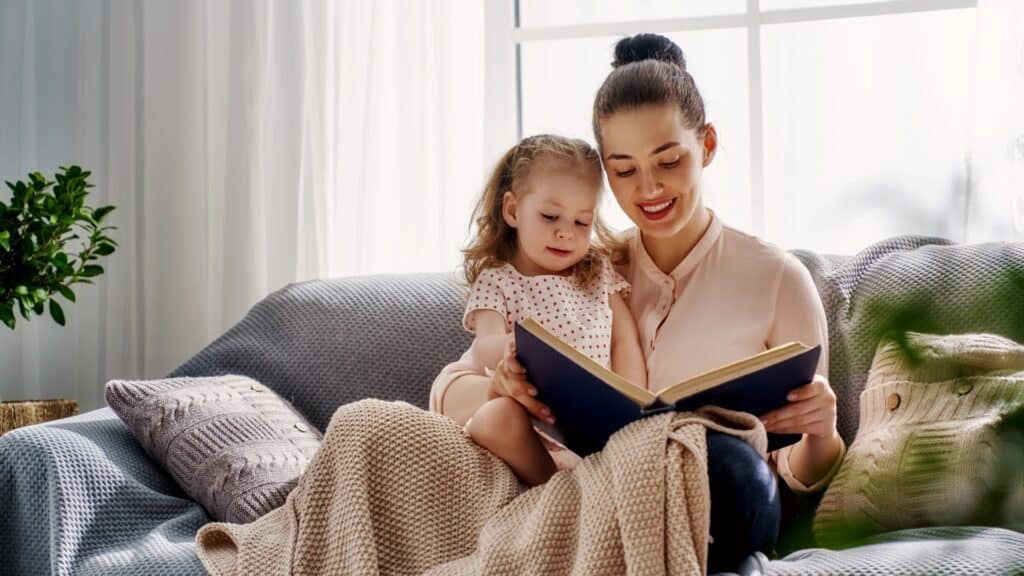
Addressing Common Sleep Training Challenges
While sleep training is a challenge in itself… there are additional issues that you may encounter or need to address that need careful or specific handling.
I have encountered all of the following issues when sleep training children in my care and I wanted to share with you how I handled them.
Dealing with Sleep Regression
A sleep regression can occur at any time in your little one’s development, but it can often occur around the 2-year-old mark.
Sleep regressions are completely normal but it can be very frustrating when your child who was previously sleeping well suddenly starts waking up at night or having trouble falling asleep.
Fortunately, at 2 years old, it is possible to sleep train during a sleep regression.
Make sure your child is getting enough sleep during the day, maintain a consistent bedtime routine, provide a comfortable sleeping environment, and be patient with your child.
To learn more about how to handle a 2 year old sleep regression, read this post: The 2 Year Sleep Regression Survival Guide
Managing Nighttime Wakings
Nighttime wakings are another common challenge during sleep training.
To manage nighttime wakings, try to keep the sleep environment quiet and dimly lit. Avoid picking up your child or taking them into your bed and do not turn on any bright lights.
When your little one wakes, do not dash in as soon as you hear them wake, you may find they resettle themselves after five minutes.
Gradually increase the amount of time you wait before responding to your child’s cries and re-settle your toddler using your preferred sleep training method.
Separation Anxiety
It is very common for 2-year-olds to experience separation anxiety and this can quite naturally cause issues when it comes to separating from you at bedtime.
Establish a soothing consistent bedtime routine, and offer a favorite soft toy or blanket for your little one to sleep with, white noise machines and audio apps are also great ways to offer comfort during this phase. Consider using a night light too.
A more gentle sleep training method such as the Chair Method or I’ll Be Back is advisable if separation anxiety is the root cause of your little one’s bedtime issues.
Finding the right night light for your child can be quite a task. You want something safe, comforting, and practical. The Cozy Starry Night Light ticks these boxes, with eye-friendly warm lighting and an easy-to-use dimmer.
Its gentle glow makes it the best night light for feeding baby, diaper changes, or comforting your little one back to sleep.
As your baby grows the Cozy Starry Night Light's starry sky projection can provide comfort and gentle quiet time stimulation. Its soft lighting ensures a dreamy, peaceful environment, supporting your baby’s natural sleep cycle.
It really is a fantastic nightlight (at a very reasonable price!)
- Eye-friendly warm lighting with adjustable brightness.
- Includes a timer function for convenience.
- Projects a starry sky that is soothing for little ones.
- Rechargeable battery, so it's very portable.
- A USB adapter is not included for charging.
- The star projector is static without motion (however, this is ideal for very young babies and toddlers).
- Battery life varies based on the brightness settings.
Night Terrors and Nightmares
Another common sleep issue at this age is night waking due to toddler nightmares and terrors. Use the checklist listed in the separation anxiety point above to ensure that your little one is feeling safe and secure.
Make sure you know the difference between nightmares and night terrors as they need to be handled differently: Toddler Nightmares: 6 Tricks To Prevent Them From Happening and Night Terrors In Toddlers: Don’t Panic! Do These 7 Things.
Transitioning To A Toddler Bed
Transitioning to a toddler bed can be a challenging time for you and your 2-year-old and can often require some sleep training to ensure your toddler stays in bed.
It’s exciting being able to get out of bed!
To make the transition smoother, get your toddler used to the idea of having a bed in their room and continue to let them take naps in their crib.
Allow them to put teddy to sleep in their bed whilst they’re still sleeping in their crib and get them involved in choosing the bedding.
It’s also important to set clear boundaries and expectations for your child, such as staying in bed until it’s time to wake up. Toddler clocks (like this one) are brilliant at helping toddlers understand the concept of “acceptable wake-up times”.
MELLA is the #1 most backed kid's clock and all-in-one Ready to Rise children's sleep trainer designed to keep your kid in bed longer. MELLA is a sleep trainer, alarm clock, sleep sounds machine, night light and nap timer rolled into one adorable package!
Studies show that children do not fully understand the concept of time until around 8 years old, so MELLA uses colours and facial expressions to teach your kid when it's time for bed and when it's okay to wake up. With MELLA, your kid can learn to stay in bed longer, giving you more sleep!
Fear of The Dark
Many 2 year olds will develop a fear of the dark. This is a completely normal part of their development and it must be handled with love and compassion.
I would suggest reading books that talk specifically about being scared of the dark and implementing techniques and tools that help your toddler feel safe.
One particular parenting tool that I suggest time and time again is getting a spray bottle, decorating it with stickers, and filling it with water, sequins, and a few drops of lavender or camomile essential oil to make a great monster deterrent.
|
Primary Rating:
5.0
|
Primary Rating:
4.6
|
|
Description: Join Orion on an imaginative adventure through the world of the dark! In this beautifully illustrated children's book, author Emma Yarlett explores the concept of fear and how we can overcome it. Follow Orion as he learns to face his fears and discovers the magic and wonder that can be found in the dark. With engaging storytelling and stunning illustrations, "Orion and the Dark" is a must-read for children and parents alike. |
Description: I love Franklin stories and this book is no exception. In this story, poor little Franklin discovers he's afraid of the dark. This is particularly distressing for Franklin as he happens to be a turtle, and the darkness he fears is, of course, inside his own shell. Bravely, with shell in tow, he sets forth to seek help and in the course of his travels discovers a bird who is afraid of heights, a polar bear who is afraid of the cold, and even a hydrophobic duck. In the end, Franklin discovers that everybody is afraid of something, even his own mother, and his response to what he has learned is guaranteed to draw a smile. |
Join Orion on an imaginative adventure through the world of the dark! In this beautifully illustrated children's book, author Emma Yarlett explores the concept of fear and how we can overcome it. Follow Orion as he learns to face his fears and discovers the magic and wonder that can be found in the dark. With engaging storytelling and stunning illustrations, "Orion and the Dark" is a must-read for children and parents alike.
I love Franklin stories and this book is no exception. In this story, poor little Franklin discovers he's afraid of the dark.
This is particularly distressing for Franklin as he happens to be a turtle, and the darkness he fears is, of course, inside his own shell. Bravely, with shell in tow, he sets forth to seek help and in the course of his travels discovers a bird who is afraid of heights, a polar bear who is afraid of the cold, and even a hydrophobic duck. In the end, Franklin discovers that everybody is afraid of something, even his own mother, and his response to what he has learned is guaranteed to draw a smile.
Arrival of A New Sibling
Many families expand when children reach the 2-year-old mark. If you have a baby on the way, start making preparations for sleep training or bed transitions at least 2 months before baby is due.
If baby has already arrived watch this video to help your toddler adapt to having a sibling:
When To Seek Help For Sleep Training A 2-Year-Old
While some children may learn to sleep independently without much effort, others may require more guidance and support.
If you have been trying to sleep train your 2-year-old for several weeks or months without any success, it may be time to seek help from a pediatric sleep consultant or your local doctor.
Here are some signs that indicate it might be time to reach out to a sleep specialist:
- Your child consistently wakes up multiple times during the night and cannot fall back asleep on their own.
- Your child consistently has trouble falling asleep at bedtime and requires your presence to do so.
- Your child takes short naps during the day and is constantly tired.
- Your child has been experiencing sleep disturbances for an extended period of time, and it is affecting their development and behavior.
- Your child snores loudly or has breathing pauses
Your pediatrician or sleep consultant can help identify any underlying sleep disorders or behavioral issues that may be affecting your child’s sleep.
They can also provide you with personalized sleep training strategies that are tailored to your child’s specific needs.
It is also a good idea to go to your appointment well-prepared. Make a note of sleep patterns in a diary and any concerns and observations you have.
This helps your pediatrician better understand the issues and have a clearer picture of what is going on at bedtime and nap time.
With one spacious page dedicated to each day, you'll have plenty of room in this delightful planner to write down all your to-dos, appointments, and notes for the year.
Ideal for parents tracking baby's sleep, feeding, and pooping schedules...
Or a sleep journal for toddlers...
Whatever your requirements for the diary need to be, this handy planner will tick the right boxes.
REMEMBER: No matter which route you choose to take when it comes to sleep training your 2 year old always remember, sleep training is a gradual process that requires loving support, patience, persistence, and consistency. In this way, you can help your 2-year-old develop healthy sleep habits that will benefit them for years to come.
Frequently Asked Questions About Sleep Training A 2-Year-Old
Navigating sleep training for your 2-year-old can raise many questions. This section addresses the most common concerns I have been asked with clear, actionable guidance.
Q: What are effective techniques for sleep training a toddler who has been co-sleeping?
A: If your 2-year-old is used to co-sleeping, it can be challenging to transition them to their own bed when sleep training. One effective technique is to gradually move them to their own bed by starting with a mattress on the floor next to your bed, and then gradually moving the mattress farther away over time. Create a cozy and inviting sleep environment in their own bed with their favorite stuffed animals, blankets, and pillows.
Q: What strategies can help a 2-year-old fall asleep independently without resorting to crying it out?
A: Yes. Crying it out is not the only way to sleep train a 2-year-old. One strategy is to establish a consistent bedtime routine that includes calming activities like reading a book or singing a lullaby. Another strategy is to gradually decrease your presence in the room over time until your child can fall asleep independently using the Chair Method. You can also try using a white noise machine or a nightlight to help soothe your child to sleep.
Q: How can I establish a consistent nighttime routine to help my 2-year-old sleep train successfully?
A: Establish a consistent nighttime routine by setting a consistent bedtime and wake-up time, and then create a calming routine that includes activities like a warm bath, reading a book, and singing a lullaby. Be sure to stick to the routine every night, even on weekends, and make sure bedtime happens at the same time every night.
Q: How can I teach my 2-year-old to self-soothe and sleep through the night?
A: One effective technique to teach your 2-year-old to self-soothe is to gradually decrease your presence in the room over time until your child can fall asleep independently (the Chair Method). You can also try using a transitional object like a stuffed animal or blanket to help your child feel safe and secure when alone. If your child wakes up during the night, give them a few minutes to try to fall back asleep on their own before going into their room.
Q: What is the 5-10-5 method?
A: The 5-10-5 method is a variation of the graduated extinction method of sleep training technique that involves increasing the amount of time you wait before responding to your child’s cries during the night. Start by waiting 5 minutes before going into your child’s room, then increase to 10 minutes, and then 15 minutes. The goal is to give your child the opportunity to learn how to self-soothe and fall back asleep on their own.
Need More Parenting Help?
- Download our FREE Perfect Sleep Cheat Sheet. It’s a free, easy-to-use and proven formula designed for parents of 0-5 year olds to master the art of consistently undisturbed and restful sleep without the yelling, nagging or exhausting long-winded evenings.
- Check out our Parenting Toolbox. You’ll get access to expertly-chosen products that you can guarantee are the best for your little one and your wallet.
- Ready to create the calm, peaceful evenings you deserve? Then checkout our most popular course - The Bedtime Battles Masterclass

A bedtime & nap cheat sheet so good your little one will ask you to put them to bed...
Laura Williams "This is a life saver! I'm so glad I downloaded your bedtime & nap cheat sheet. My little one actually asked me to put him to bed last night! Unbelievable! Thank you so much!"
Click Here For The FREE Cheat Sheet
